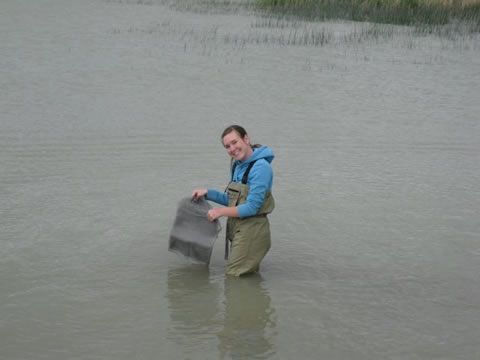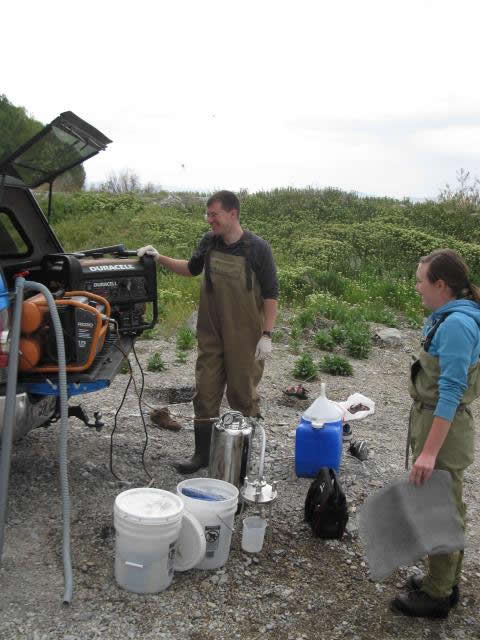News Article
January 8, 2015
Breakthroughs in Aquatic Microbiology Advance iUTAH's Research
Streams are teeming with many different kinds of bacteria, but until recently the technology has not existed to let scientists understand how the species composition of microbial communities is linked to water quality. Researcher Zachary Aanderud and his PhD student, Erin Jones, are studying the importance of bacteria in stream environments and their role in water quality for iUTAH. Breakthroughs in DNA sequencing technique allow iUTAH to be part of a new wave of aquatic ecology studies now taking place. Previously scientists could describe stream bacterial activity only in terms of total carbon – basically measuring the amount of bacteria, but not which kinds are present. Identifying the species present is useful because different types of bacteria are able to create different biochemical compounds, including ones that are considered pollutants. We now are able to analyze a stream's capacity to produce any number of pollutants, based on molecular activity represented in bacterial genomes.
Their first study involved collecting water samples from high elevation-pristine sites to low elevation-urbanized sites in the Logan, Red Butte, and Provo watersheds. In the past, their lab had measured levels of a single bacterium, E. coli, at these sites, and recorded a definite increase in this species from high elevation to low elevation. The more urbanized sites showed a decrease in bacterial diversity – there were fewer species, and certain species tend to grow more dominant as they looked further downstream. Upon closer examination, the shift in bacterial community happened ABOVE heavy urbanization in all three watersheds. Instead, the shift corresponded to sites immediately downstream of dams (First Dam in Logan, Red Butte Reservoir in Red Butte, and Jordanelle Reservoir in Provo). This change occurred before there were significant changes in E. coli levels.
This data, paired with water chemistry data collected by iUTAH researchers, will give huge insights to how bacteria communities interact with other water quality variables. By collecting samples during different seasons of the year we can see if these trends are consistent across different weather and flow patterns.

Erin Jones sampling Utah Lake

Filtering samples with fellow graduate student Tylan Magnusson
« Back to list of all news articles


